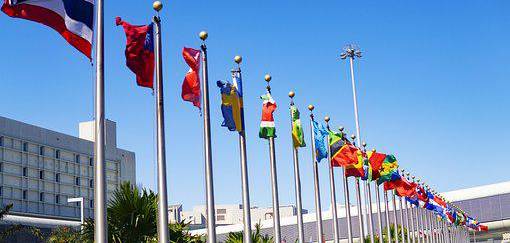
The Sustainable Development Goals Report 2022 is the only UN official report that monitors global progress on the 2030 Agenda for Sustainable Development. Using the latest available data and estimates, The SDGs Report 2022 gives the global community a reality check on the devastating impacts of multiple crises affecting people's lives and livelihoods. This annual SDG Report is prepared by UN DESA, in collaboration with the entire UN Statistical System, consisting of more than 50 international and regional agencies, based on data from over 200 countries and territories. It tracks the global and regional progress towards the 17 Goals with in-depth analyses of selected indicators for each Goal.
According to the Report, cascading and interlinked crises are putting the 2030 Agenda for Sustainable Development in grave danger, along with humanity’s very own survival. The Report highlights the severity and magnitude of the challenges before us. The confluence of crises, dominated by COVID-19, climate change, and conflicts, are creating spin-off impacts on food and nutrition, health, education, the environment, and peace and security, and affecting all the Sustainable Development Goals (SDGs). The Report details the reversal of years of progress in eradicating poverty and hunger, improving health and education, providing basic services, and much more. It also points out areas that need urgent action in order to rescue the SDGs and deliver meaningful progress for people and the planet by 2030.
The risk of species extinction continues to rise and is highest in Asia and small island developing States The risk of species extinction is increasing at a rate unprecedented in human history. The Red List Index, which measures the overall extinction risk of species in selected taxonomic groups, reveals a deterioration of 9.2 per cent between 2000 and 2022. Wide variations are found among regions in both the overall prevalence of extinction risk and the rate of deterioration. Central and Southern Asia, Eastern and South-Eastern Asia, and small island developing States suffer from more severe risk and faster deterioration than the global average. The main drivers of these declines are the unsustainability of agriculture and the over-harvest of wild species. Human activities such as logging and farming are encroaching upon habitats, putting about 20 per cent of reptile species, for example, at risk. To conserve and sustainably use biodiversity, key actions are urgently needed, including reversing the net loss of habitat, transforming land management and transitioning to sustainable agriculture
Increasing acidification is limiting the ocean’s capacity to moderate climate change The ocean absorbs around one quarter of the world’s annual carbon dioxide (CO2) emissions, thereby mitigating climate change and alleviating its impacts. This critical service, however, comes at a price: it is altering the carbonate system and increasing the acidity of the ocean. Ocean acidification threatens organisms and ecosystem services, endangers fisheries and aquaculture, and affects coastal protection by weakening coral reefs. Further increases in acidification are expected to accelerate over the coming decades. As acidification worsens, the ocean’s capacity to absorb CO2 from the atmosphere will diminish, limiting its role in moderating climate change. Over the last two years, the number of observation stations reporting on ocean acidification has almost doubled, from 178 in 2021 to 308 in 2022. Gaps in reporting and data remain. Observation sites in the open ocean have indicated a continuous decline in pH over the past 20 to 30 years. Coastal observations, on the other hand, present a more varied picture due to multiple stressors.
The proliferation of plastic, nutrient run-off and other forms of waste is killing marine life The main sources of marine pollution are land-based, leading to a seemingly unstoppable flow of litter, waste and run-off into the ocean. In 2021, a study estimated that more than 17 million metric tons of plastic entered the world’s ocean, making up the bulk (85 per cent) of marine litter. The volume of plastic pollution entering the ocean each year is expected to double or triple by 2040, threatening all marine life. For coastal areas, eutrophication caused by nutrient pollution shows an increasing trend from 2016 to the present. This has resulted in a growing number of “dead zones” worldwide – from 400 in 2008 to around 700 in 2019. While COVID-19 may have reduced coastal pollution in some areas due to declining tourism and other activity, the pandemic does not appear to have eased coastal eutrophication globally. Vast areas of the ocean are under protection, but more intensive efforts are still needed Marine protected areas (MPAs) and other effective, area-based measures to conserve biodiversity – including marine sanctuaries, parks and reserves – have seen substantial growth over the last decade. The global coverage of MPAs stood at 8 per cent of global coastal waters and oceans in 2021. Recent designations of MPAs will raise this share, edging closer to the 10 per cent called for in the SDG and Aichi Biodiversity target. For example, a high-seas MPA that is vitally important for seabirds was recently designated in the North Atlantic, covering almost 600,000 square kilometres. It is important that protected areas are strategically located – in sites most critical to the conservation of nature, such as key biodiversity areas (KBAs). That said, more than half (55 per cent) of marine KBAs, on average, are still not safeguarded
We must rise higher to rescue the SDGs – and stay true to our promise of a world of peace, dignity and prosperity on a healthy planet.
António GuterresSecretary-General, United Nations
Posted on 2022-07-11 14:00








Comments